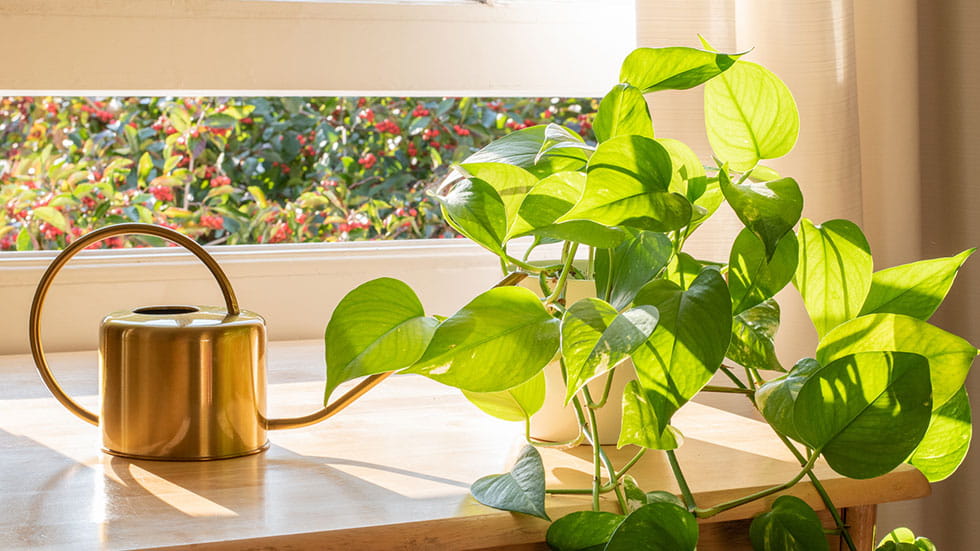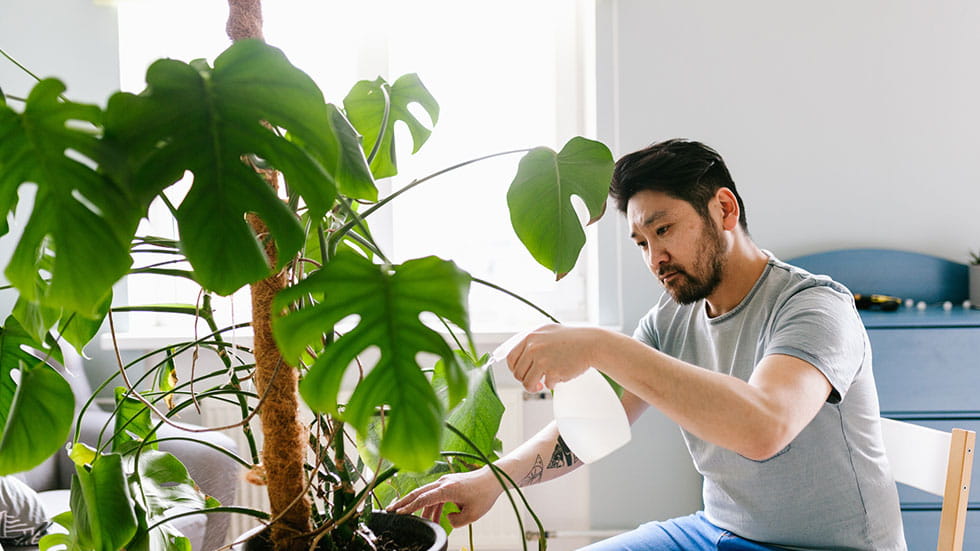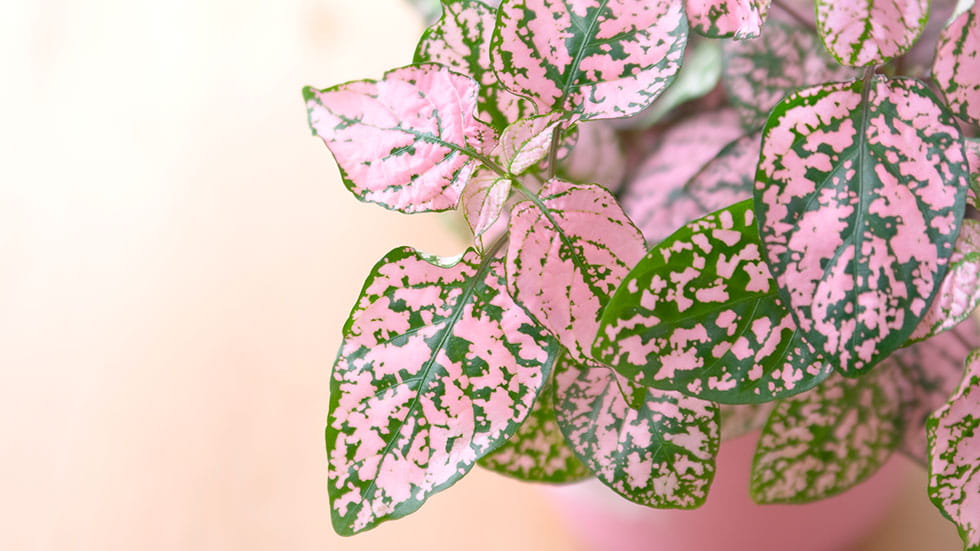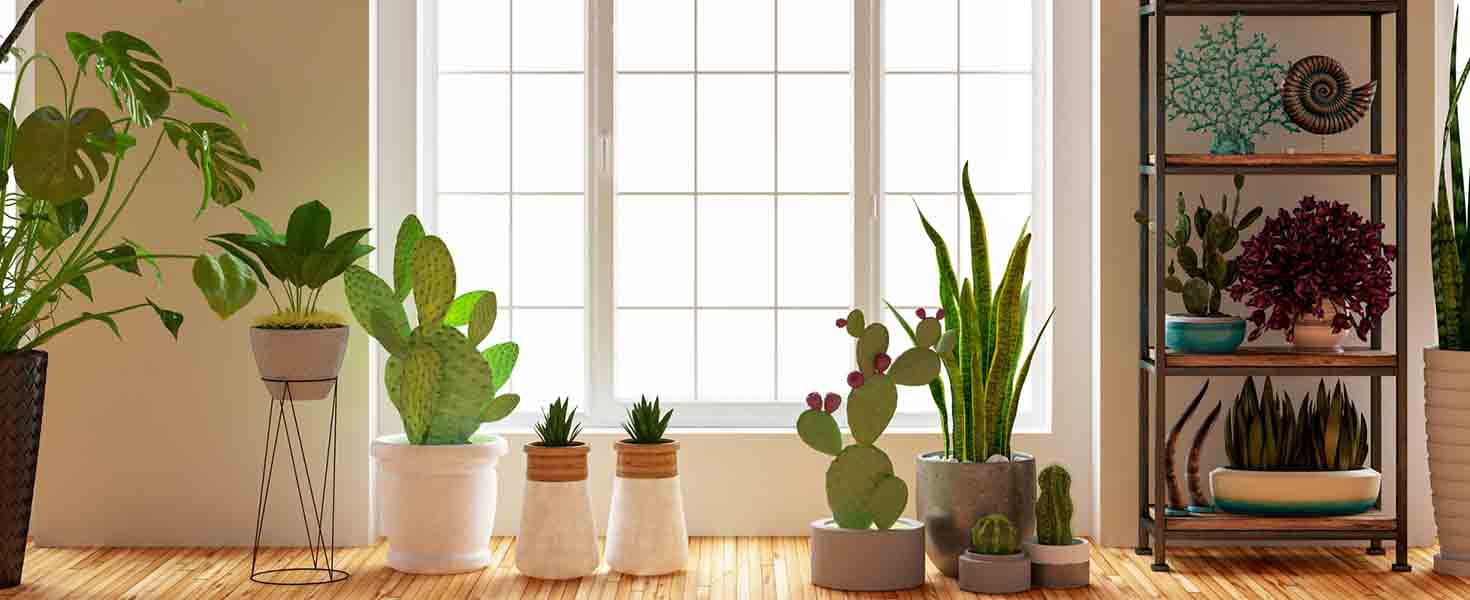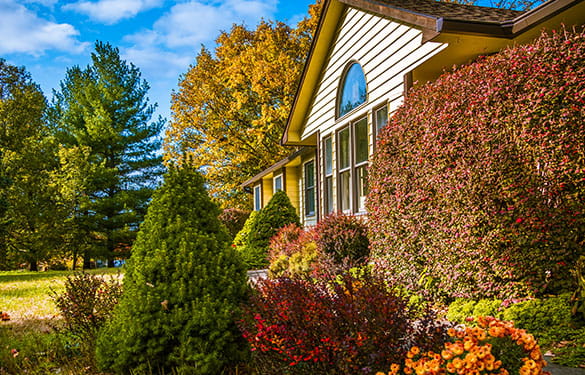I’ve been a faux-plant person for most of my adult life. As someone who was constantly traveling for work during most of my 20s and 30s, I didn’t think taking care of a plant was a good fit for my busy lifestyle. Despite wanting to elevate my home décor with the real deal, I figured that some people (aka yours truly) weren’t meant to be houseplant parents.
Sarah Nolimal, a senior horticulturist for the Chicago Botanic Garden, begs to differ. “It’s about finding that plant that will fit your lifestyle,” she says. Nolimal says there is a houseplant to suit any personality, environment, and lifestyle—and that includes even the busiest or laziest of us. “It’s about assessing how well a plant will work with you.”
She recommends visiting a local gardening center (versus a big-box store) to consult with a gardening professional who can quickly narrow down options appropriate for you. Key factors to consider should include:
- the light levels in your home
- safety considerations for children and pets living in the home
- how much time you can honestly dedicate to taking care of the plant
This approach also helps you go home with a plant that is healthy, adds Nolimal. She says a common newbie mistake is buying a plant off the shelf that is already sick or diseased—something that isn’t always obvious to most of us. Experienced gardeners at smaller nurseries are less likely to let that happen.
If you’re flirting with the idea of becoming a first-time plant parent, here are Nolimal’s recommendations for different lifestyles. May these suggestions plant the seeds for your entrance into plant parenthood.
FOR THOSE RARELY AT HOME
Maybe work or life takes you away from your home for extended periods of time. Or perhaps you’re just—let’s face it—lazy. Yes, there is a plant that even you cannot kill.
Pathos Plant
Also known as: Epipremnum aureum, devil’s ivy
This is widely considered to be a great starter plant. It happens to be the first one that Nolimal brought into her home, igniting a career vocation in horticulture. “It’s super easy to maintain, tolerates literally anything, and never has pest problems,” says Nolimal. It’s one that seems to thrive on neglect and earned the name “devil’s ivy,” because it’s nearly impossible to kill.
The beautiful, trailing plant features shiny, heart-shaped leaves and is exceptionally undemanding. It can thrive in a wide range of environments, tolerating low light and minimal watering. A bonus: Having a Pathos in the home could help you breathe a little easier, literally. It was featured in NASA’s Clean Air Study, which highlighted certain plants’ ability to serve as natural air filters. The pathos plant was shown to remove indoor pollutants such as formaldehyde, trichloroethene, xylene, and benzene, some of which are found in cleaning products commonly used in the home.
FOR THE NATURAL-BORN NURTURER
On the opposite end of the spectrum, if you are ready to dedicate some serious TLC to your new hobby, then your options abound. Perhaps you’re retired with more time, or maybe you’re simply ready to make plant care your hobby. Nolimal offers these recommendations.
Fiddle Leaf Fig Plant
Also known as: Ficus lyrata
Nolimal describes this plant like a fussy baby: “It’s a classic, finnicky plant that needs close monitoring when first getting established, but is easy once you know what makes it happy.” This popular indoor tree grows upright and sprouts large, glossy, fiddle-shaped leaves.
The fiddle leaf fig plant can grow anywhere from 6 to 10 feet tall, and offers a dramatic focal point in a room. It requires bright, filtered light and need rotating every few days, so that all parts of the plant can grow evenly.
Monstera Plant
Also known as: Monstera deliciosa, Swiss cheese plant, split-leaf philodendron
The monstera adds sophistication and exotic flair to any room. Just be prepared for some serious work to keep this plant happy. “It grows quickly,” says Nolimal, “and needs frequent shaping.” In the wild, this massive plant, with glossy, heart-shaped, split leaves, can grow to up to 60 feet. In the home environment, if can grow about 1 to 2 feet a year.
Native to the Central American rainforest, the monstera plant grows in the speckled light of the rainforest floor, so it prefers spaces with low light. Direct sunlight will likely cause scorched or yellow leaves.
FOR FAMILIES WITH KIDS
Bringing some greenery into the home is a wonderful opportunity to teach kids basic caretaking skills. This is one of my primary motives, now that I have a 3-year-old daughter with a budding enthusiasm for horticulture. If you have babies or toddlers roaming about the home, choosing a nontoxic plant is imperative. You may also want something that is (relatively) low maintenance. If you’re like me, you already have enough on your hands.
Polka Dot Plant
Also known as: Hypoestes phyllostachya
The polka dot plant comes in several color combinations. The most common is pink leaves with green spots, but you’ll find eye-catching varieties that combine red, white, green, and pink. The plant requires bright, indirect, sunlight to thrive and a consistently moist (not soggy) soil. Misting these plants several times a day is recommended. This can be a fun chore to assign a kiddo in the house—wink, wink.
Tillandsia Plant
Also known as: air plant
This tiny plant is great for novice indoor gardeners, says Nolimal, because it requires little care and little light to thrive. These otherworldly looking plants are also unique because they can grow without rooting into soil. They get their moisture and nutrients from the surrounding air and the surface upon which they grow. That’s how the tillandsia plant earned the nickname “air plant.” People often display them in glass bowls or mounted display shelves.
To keep the tillandsia plant thriving, water it about once a week and give it a 2-hour soak every 2-3 weeks. With more than 600 different types, options abound to elevate any room in the house with a tillandsia plant.
FOR HOMES WITH PETS
Choosing a nontoxic plant is key with four-legged friends. Nolimal says it’s important to consider which shapes might attract your pet’s curiosity, and to avoid these in any plant you bring home. This is why Nolimal wouldn’t bring a spider plant into her home, as her cat could mistake the leaves for string.
Cast Iron Plant
Also known as: Aspidistra elatior
This plant is nontoxic to cats and dogs—and a great choice for plant lovers with brown thumbs. It can survive lots of neglect and thrive in conditions that would kill other plants (such as low light). It’s dark green, lance-shaped leaves can grow to 2 feet long and 4 inches wide.
Watermelon Peperomia Plant
Also known as: Peperomia argyreia, watermelon begonia
Each of the leaves of this adorable plant look like a tiny watermelon. It’s an easy-going, nontoxic houseplant that can be tucked into the corner of a windowsill or desk. As opposed to bushier or trailing plant varieties, the waxy leaves of the watermelon peperomia plant aren't likely to tempt your furry family members.
For a more comprehensive list of plants that are nontoxic to dogs and cats, consult the list from ASPCA.











